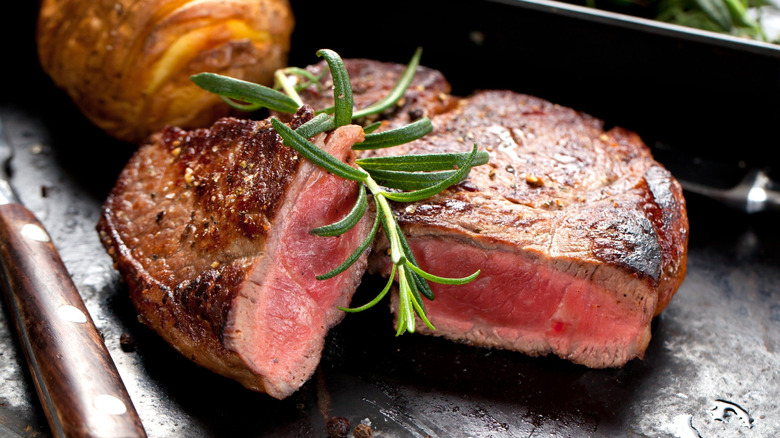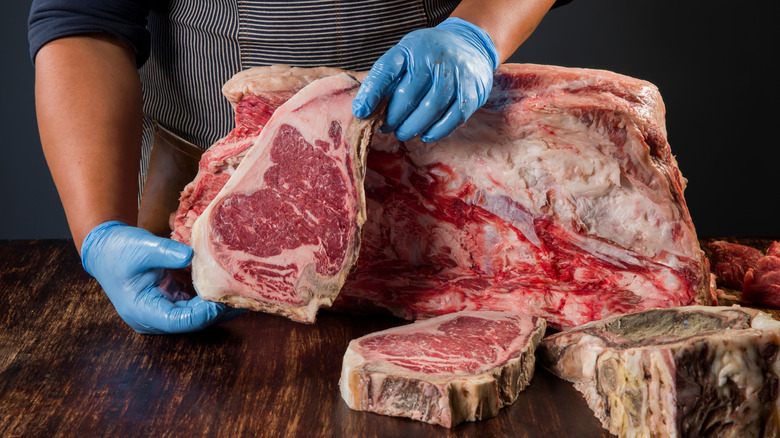When You Should (And Shouldn't) Reverse Sear Your Steaks
If you're trying to perfect your steak game, reverse searing definitely needs to be in your repertoire of cooking techniques. But just because you know how to do it, doesn't mean you should opt for it every time. To find out more about when (and when not) to reverse sear steak, we reached out to Sam Shafer, executive chef of Revival at The Sawyer in Sacramento, California.
"Reverse searing is a technique for cooking that involves slowly cooking the protein at a low temperature before searing at the end," Shafer told The Takeout. "Some of the benefits of reverse searing are to ensure the steak is evenly cooked at a low temperature, avoiding the common issue of a well done exterior and rare interior." A classic mistake when cooking steak is to start off with a ripping hot pan, as the heat can overcook the outside before the inside has a chance to even start. Or as Shafer put it, "Searing at the end creates a flavorful crust without overcooking the interior."
This all sounds well and good, so why shouldn't we be reverse searing every piece of steak we put on the grill? Well, you could, but this technique is best used when dealing with thick pieces of steak. "Thicker cuts are better suited for reverse searing compared to thinner ones," Shafer said. "Steaks should be at least 1½ to 2 inches thick."
Thicker steaks are better for reverse searing
You don't have to wait until you have the meat in front of you to decide whether or not you want to reverse sear, as different cuts of steak are more likely to be thicker than others. "Ribeye, New York, and filet mignon are great cuts that would provide great results in reverse searing," said Sam Shafer. It helps to know ahead of time your method of preparation so you can be sure to get the right ingredients at the store. By choosing the right meat for the job, you won't be caught off guard at the grill.
Some cuts of steak are easier to work with than others, but that doesn't mean you have to avoid thinner cuts altogether. After all, they tend to be a touch more affordable, and all the steak might need is a good marinade. If you do opt for a thin cut of steak, though, don't bother reverse searing.
"Trying to reverse sear proteins that are too thin can result in overcooking," Shafer continued. "Thin proteins become dry and tough in the rapid cooking process." But don't worry, there is a workaround if you are cooking a thinner piece. "A way to solve this issue is to cook by sous vide," said Shafer. "Make sure to slightly undercook so that the protein does not overcook when searing." This also helps sous vide steak generate some texture and browning, a common issue with this method of preparation.

